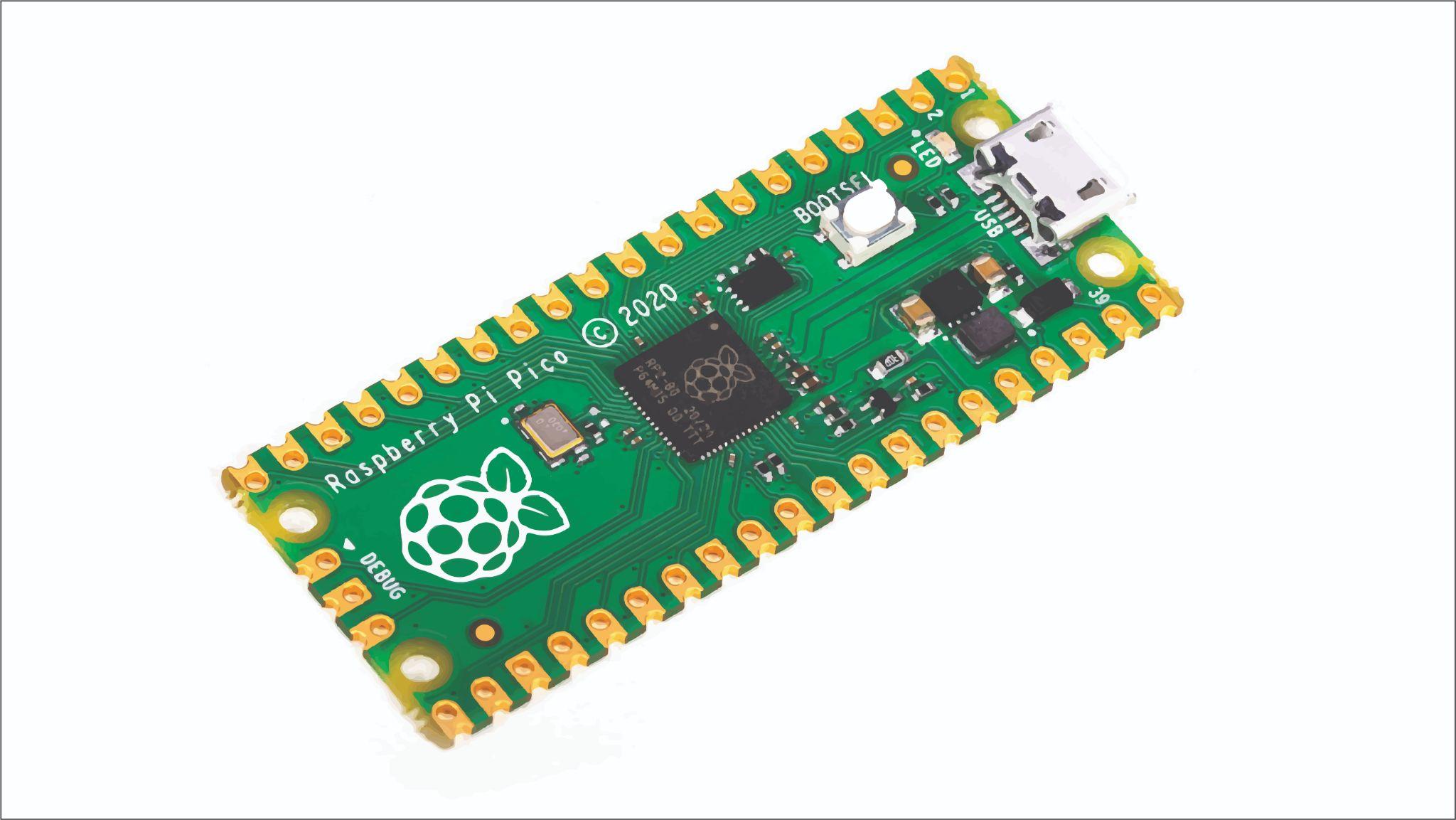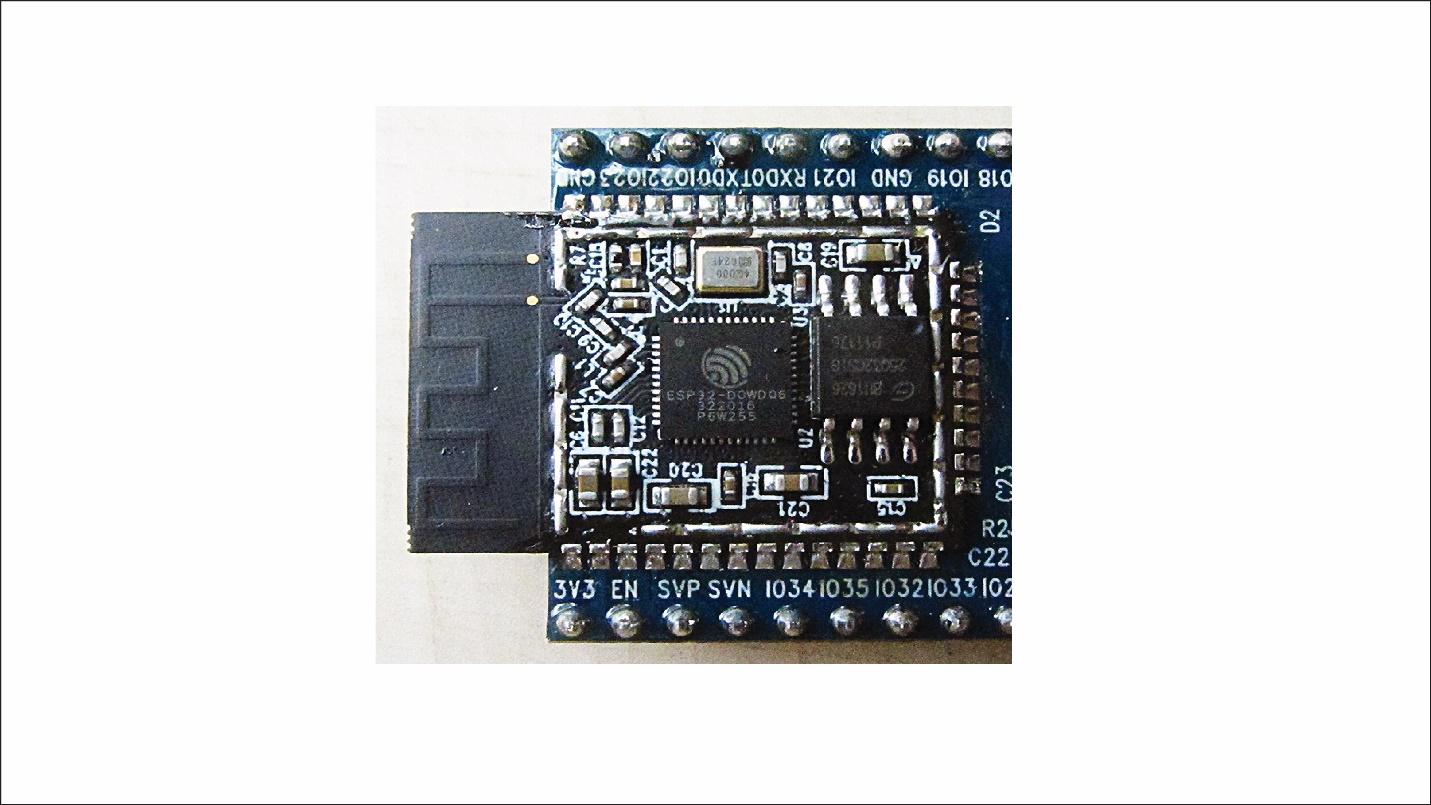If you are uncertain about whether to go with Raspberry Pi Pico or ESP32 board, follow this article to see a detailed comparison of both these boards. This will help you select the one according to your needs.
Raspberry Pi Pico
The Raspberry Pi Pico is a RAM size single programmable board that comprises all necessary interface modules used for robotics, home automation, edge computing, and industrial applications. Additionally, It can perform all the operations through a microcontroller you would expect for an Arduino. It has a Dual-Core 32-bit ARM Cortex-M10+ CPU with a clock rate of 133 MHz, which is sufficient to run programmable projects. Additionally, it consists of the I/O interface, such as Micro-USB and GPIO pins with additional 264Kbytes of SRAM.
ESP32
ESP32 is a inexpensive System-on-Chip (SOC) based microcontroller device having a dedicated Wi-Fi module and 2.4GHz dual-band Bluetooth for communication purposes. Both Wi-Fi and Bluetooth are designed to operate at low power consumption. The family of ESP32-series utilizes either dual-core Tensilica Xtensa LX6 and Xtensa LX7 microprocessor or single-core RISC-V and Tensilica Xtensa LX6 microprocessor with a clock rate of 240MHz. Additionally, these dual-core processors perform 600 DMI (Dhrystone Million Instructions) per second operations sufficient to reduce the processing time of a microprocessor.
Moreover, the built-in printed microstrip antenna with additional elements such as switches (diplexing the signal through antenna), RF balun (convert unbalanced to balanced), power amplifier (increase the strength of the received signal) using Low Noise Amplifier (LNA), filters (bypass undesired signal), and other modules are integrated in ESP32 for communication purposes.
Specifications
This comparison between Raspberry Pi Pico and ESP32 informs a thorough insight into the specifications according to the internal modules.
| Sr # | Name | Raspberry Pi Pico | ESP32 |
| 1 | Processor | Dual Core Arm Cortex M0+ CPU | Single/Dual Core Tensilica Xtensa LX6 and Xtensa LX7 microprocessor (32-bit) |
| 2 | Memory (RAM) | 264 KB | 520 KB |
| 3 | Clock Speed | 133MHz | 80 /160/ 240 MHz |
| 4 | I/O Interface | 2 x UTAR
2 x 2 x SPI USB 1.1 16 x PWM Channels 40 x GPIO Pins |
34 x GPIO pins
4 x SPI 2 x 2 x 3 x UTAR Three Sensors PWM Channel Antenna, Ethernet Interface Capacitive touch sensors |
| 5 | Operating Voltages | 1.8 – 5.5V | 2.2 – 3.6V |
| 6 | Flash Memory | 2MB | 4MB |
| 7 | Operating System (OS) | Raspbian, Ubuntu, OSMC, and RetroPie. | Supported Languages are Arduino IDE, Espruino, mruby, Zerynth |
| 8 | External Flash Memory Support | 16 MB | 16 MB |
| 9 | USB Support | Yes | No |
| 10 | Price | Around $13 | Around $5 |
Advantages of ESP32 over Raspberry Pi Pico
The ESP32 has the following advantages over the Raspberry Pi Pico:
- ESP32 has slightly better performance compared to Raspberry Pi Pico as the CPU clocks at 240MHz compared to Raspberry Pi Pico that offers clock speed up to 133MHz.
- The ESP32 has a faster instruction rate as compared to Raspberry Pi Pico.
- The ESP32 includes dual-band Wi-Fi and Bluetooth connectivity while Raspberry Pi Pico lacks.
- The ESP32 supports three different operations using the I/O pins, such as Digital, Analog (to analyze the received and transmitted data), and internal sensors to detect the Hall effect Sensor, Internal Temperature Sensor, and Touch sensor.
- ESP32 device requires a fraction of voltage of approximately 3.6V to turn on while Raspberry Pi Pico requires 5.5V.
Advantages of Raspberry Pi Pico over ESP32
- The RAM on Raspberry Pi Pico contains six independent banks which are used to handle parallel tasks simultaneously, which ultimately increases the efficiency of Raspberry Pi over ESP32.
- Raspberry Pi Pico has an integrated Micro-SD card for programming and booting the operating system while ESP32 lacks.
- Programming on Raspberry Pi Pico is easy as compared to ESP32.
Conclusion
The choice of microcontroller depends on the user’s needs. If a user is looking for a low-cost and easy to use device, he/she can go with Raspberry Pi Pico. However, if the focus is creating industrial projects with a better speed and performance, ESP32 is a better choice in that case. The Raspberry Pi Pico could be an excellent choice for IoT and robotics, while ESP32 is a suitable candidate for mobile communication, wearable smart electronic modules, and IoT applications.


